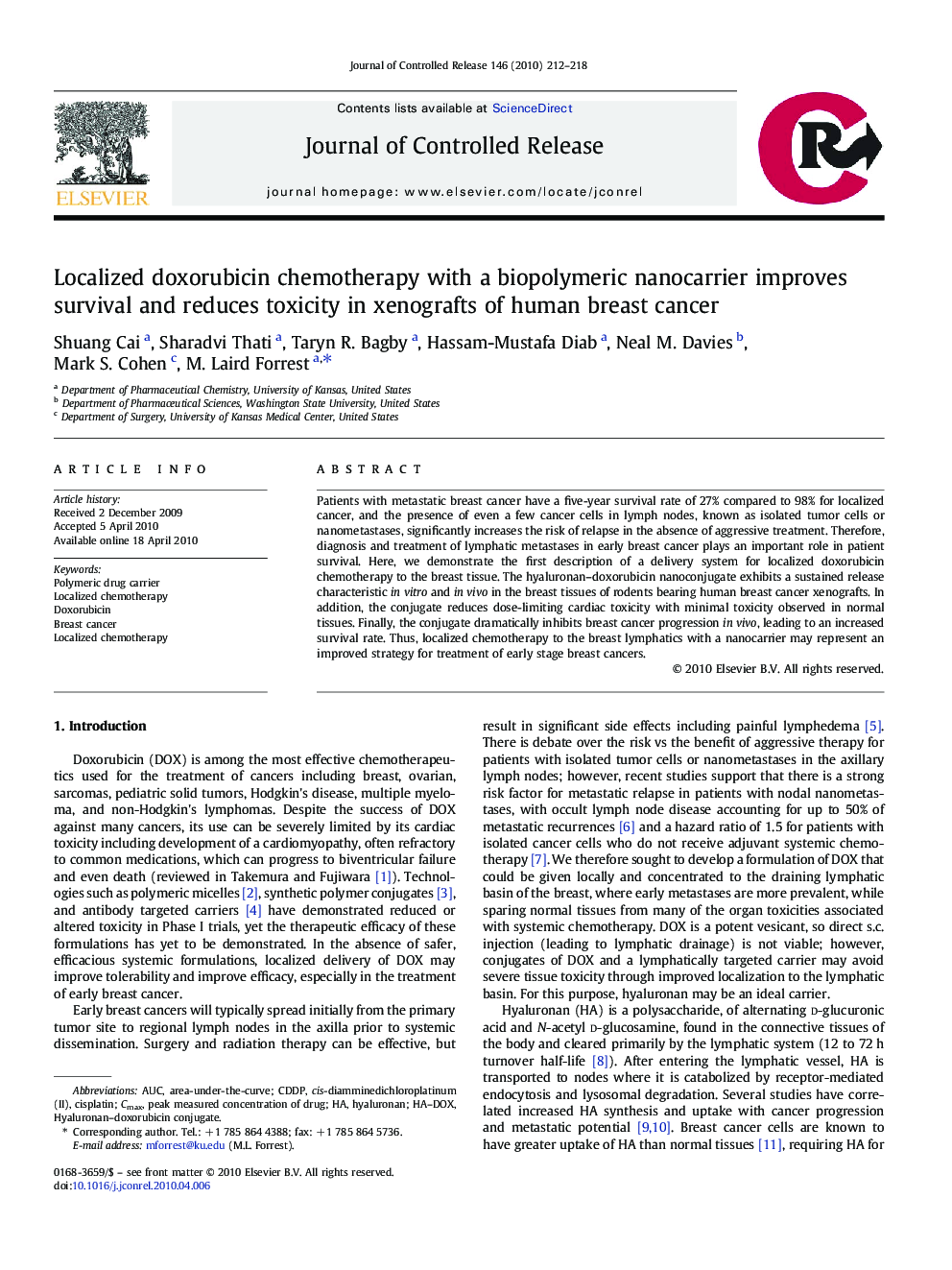| Article ID | Journal | Published Year | Pages | File Type |
|---|---|---|---|---|
| 1425610 | Journal of Controlled Release | 2010 | 7 Pages |
Patients with metastatic breast cancer have a five-year survival rate of 27% compared to 98% for localized cancer, and the presence of even a few cancer cells in lymph nodes, known as isolated tumor cells or nanometastases, significantly increases the risk of relapse in the absence of aggressive treatment. Therefore, diagnosis and treatment of lymphatic metastases in early breast cancer plays an important role in patient survival. Here, we demonstrate the first description of a delivery system for localized doxorubicin chemotherapy to the breast tissue. The hyaluronan–doxorubicin nanoconjugate exhibits a sustained release characteristic in vitro and in vivo in the breast tissues of rodents bearing human breast cancer xenografts. In addition, the conjugate reduces dose-limiting cardiac toxicity with minimal toxicity observed in normal tissues. Finally, the conjugate dramatically inhibits breast cancer progression in vivo, leading to an increased survival rate. Thus, localized chemotherapy to the breast lymphatics with a nanocarrier may represent an improved strategy for treatment of early stage breast cancers.
Graphical abstractImaging of HA–DOX in the primary tumor and the surrounding lymphatics. HA–DOX was injected peritumorally (white arrows) with most of the carrier draining to the adjacent nodes (blue arrow).Figure optionsDownload full-size imageDownload as PowerPoint slide
